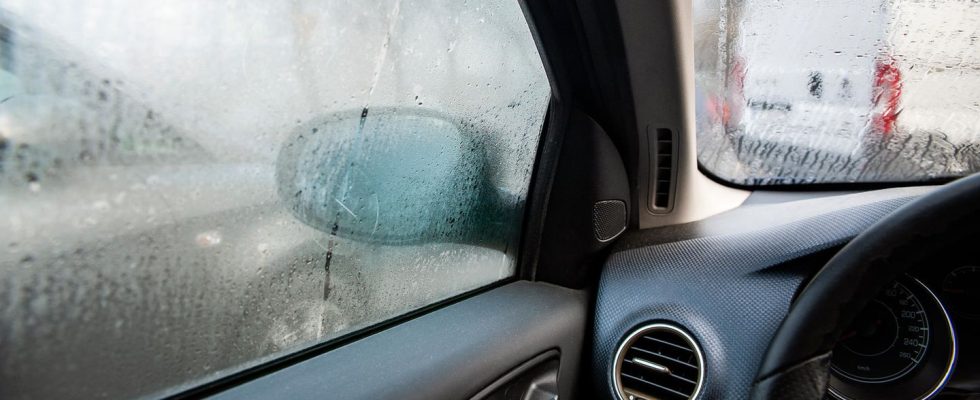Dehumidifier
Fogged windows? How to reduce moisture and mold in the car
Foggy windows while driving are not uncommon in winter
© dies-irae / Getty Images
When temperatures drop, fogged up car windows are not uncommon. The high humidity inside the vehicle not only obscures visibility – it also provides ideal conditions for rust and mold. A dehumidifier should counteract this.
You know this too: you’ve just gotten into the car and the windows are already fogging up. But why actually? This is caused by your warm breath, which condenses on the cold window glass due to strong temperature differences. But what if the car windows are already fogged up before you get into the vehicle? This suggests that there is too much residual moisture in your car. In both cases, a dehumidifier is supposed to help, but what exactly is that? And how can moisture in the car be avoided or at least reduced? We’ll tell you.
How do you use dehumidifiers in your car?
At a Dehumidifier for vehicles, it is a type of cushion filled with special granules or leak-proof gel. You place this in the car (for example on the dashboard) to draw moisture out of the air. This not only reduces fogged up windows and bad smells, but also prevents mold, rust and mildew. Depending on the manufacturer, the duration of the effect is between several weeks and up to three months – this always depends on the size of the vehicle interior. What is particularly practical about this type of dehumidifier is that it can be used not only in the car: The Pillow serve the same purpose in caravans or mobile homes, in (closed) garages or even inside a boat.
And the best thing about it is: If the pillow is saturated and no longer absorbs moisture, it only needs to be dried in the microwave (or on the heater) for a few minutes – and then it is ready for use again.
How to prevent the windows from fogging up
If the windows in your car fog up as soon as you drive off, the first thing you should do is turn on the fan and point it specifically at the windshield. It is also helpful to briefly turn the heating up to full so that the outflowing air warms up more quickly. However, if the windows gradually fog up while driving, this could be due to the air recirculation switch – in this case it is advisable to turn this off and switch on the air conditioning (if one is available) instead. It transports the moist air from inside the vehicle directly outside.
In addition to the dehumidifier for cars described above, you can also use other tools to prevent windows from fogging up: such as a Anti-fog spray for glass and plastic panes, which must be applied every one to two weeks to be effective. Alternatively, you can also use a microfiber windshield sponge in the vehicle – or a special one Anti-fog sponge. In any case, it is important that you only use clean rags or cloths, as dirty windows will fog up more quickly due to the film of dirt than clean ones.
Avoid moisture in the car: this is how it works
According to the ADAC, you can take some preventative measures to prevent moisture from collecting inside the vehicle and causing fogged up windows and mold:
- On snowy or rainy days, your shoes bring a lot of moisture into the car, which collects on the floor mats. You should therefore always ensure that wet mats are removed from the vehicle and always dried thoroughly.
- Old seals (for example on doors, windows and tailgates) become porous over time, allowing moisture to collect and mold to spread. For this reason, you should regularly check whether your car is still leakproof.
- As already mentioned, it is important to ventilate the vehicle properly – however, the air conditioning and heating trick only works when the outside temperature is above five degrees. And if there isn’t too much moisture in the car yet.
- Always make sure that the heater’s rainwater drain is clear. If this is clogged with old leaves (or dirt), which tends to collect between the hood and windshield, moisture builds up inside the vehicle.
- According to the ADAC, even a poorly ventilated garage can be to blame for moisture collecting on and in the car. The drier the room climate is, the better the vehicle will dry in it.
- Last but not least, clogged drain hoses can also promote moisture. If your car has a sunroof, you should regularly test whether water drains away properly. If this is not the case, the hoses may need to be repaired.
Sources: ADAC, Car picture
You might also be interested in:
This article contains so-called affiliate links. Further information are available here.



